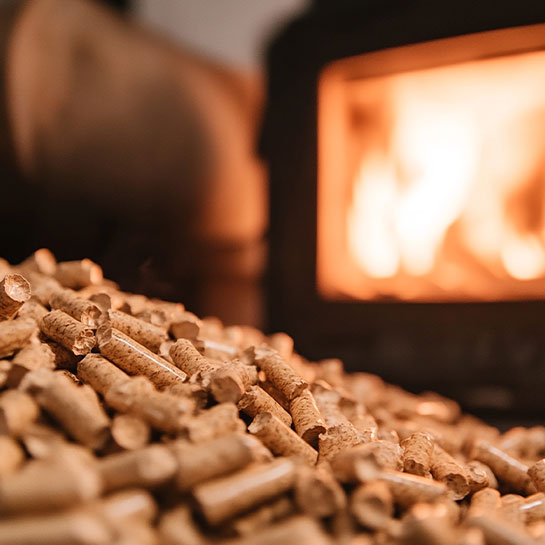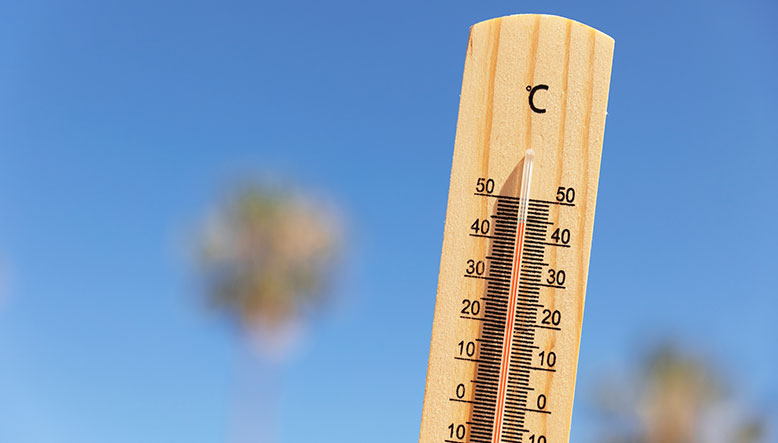Pellet stoves have gained much popularity thanks to their energy efficiency, low operating cost and environmental friendliness. However, to take full advantage of their benefits, it is important to learn how to control the temperature correctly. Maintaining the right temperature not only improves comfort in the home, but also helps to optimize pellet consumption and prolong the life of the stove.
In this article, we will explore how to control the temperature of a pellet stove to ensure efficient and comfortable heating.
Why is it important to control the temperature in a pellet stove?
Controlling the temperature is essential to ensure efficient combustion. When the temperature is properly set, the stove burns just the right amount of pellets to generate heat without wasting fuel, which optimizes its performance.
Some of the key benefits of maintaining proper temperature include:
- Energy savings: A good temperature regulation allows savings in pellet consumption.
- Increased durability: Avoiding overheating the stove helps reduce component wear.
- Reduced emissions: A stable temperature ensures that the pellets burn completely, decreasing harmful gas emissions.
Factors influencing the temperature of a pellet stove
The temperature of a pellet stove depends on several factors. Below, we explain the most important ones:
- Pellet quality: High quality pellets, with low moisture and ash content, tend to burn more efficiently and at higher temperatures. On the contrary, low quality pellets can cause incomplete combustion, affecting the stove temperature.
- Stove model: Some stoves are designed to maintain higher or stable temperatures. Modern stoves often incorporate thermostats and technologies that allow automatic temperature adjustment, making it easier to maintain the desired heat.
- Combustion configuration: The adjustment of the air inlet into the combustion chamber is critical. Adequate air flow ensures that the pellets burn completely, which helps to reach the optimum temperature. Without enough air, the temperature may be insufficient, while too much may burn the pellets too quickly.
- Household ventilation: Good ventilation is essential for efficient combustion. If ventilation is poor, the stove will not operate at its maximum capacity, affecting the temperature of the home.
- Regular maintenance: Cleaning the stove and its flue system is crucial to avoid blockages that could limit the stove’s ability to reach and maintain an adequate temperature.

Use of the thermostat in pellet stoves
Most modern pellet stoves include an integrated thermostat that allows automatic temperature control. This thermostat adjusts combustion according to the temperature of the air in the room, ensuring that the heat generated is always adequate.
Is an external thermostat necessary?
It is not strictly necessary, but can be useful if you want more precise control. An external programmable thermostat allows you to adjust the temperature in a more detailed way, programming specific times or setting different temperatures for different times of the day.
Installation of an external thermostat
If you decide to install an external thermostat, make sure it is compatible with your pellet stove model. By following the instruction manual, you can easily connect the thermostat to the stove to improve control over the temperature in your home.
Ideal temperature for a pellet stove
A well-adjusted pellet stove should operate at a combustion temperature between 350°C and 450°C. This temperature allows the pellets to burn completely, maximizing thermal efficiency and minimizing emissions.
For a comfortable home in winter, it is recommended to keep the room temperature between 20°C and 23°C. This range is sufficient to heat the room efficiently, without consuming more pellets than necessary. Remember that each additional degree in temperature increases energy consumption.
How to optimize temperature control in your pellet stove
Here are some tips to help you optimize the temperature of your pellet stove and improve its efficiency:
- Use quality pellets: Good quality pellets burn better and at a higher temperature. Be sure to buy pellets that have low moisture and ash content.
- Ensure good ventilation: Proper ventilation in the home not only improves combustion, but also prevents the buildup of gases and fumes. Consult the stove manual for details on ventilation recommendations.
- Clean the stove regularly: Remove ashes and clean the stove’s ducts to avoid blockages that can affect performance and temperature.
- Adjust the combustion settings: If your stove allows it, adjust the air intake according to the temperature you want to reach. This will help you maintain a constant and efficient temperature.
Common problems affecting temperature
Some problems that can reduce the temperature of the stove include:
- Insufficient air intake: If the stove does not receive enough air, combustion will be incomplete, resulting in a lower temperature.
- Low quality pellets: Pellets with high moisture or ash content generate less efficient combustion.
- Blockage in the flue: A blockage can cause gases not to be properly evacuated, reducing the thermal performance.
- Problems with the fan: If the fan is not working properly, the air circulation will be insufficient, which will affect the temperature.
Controlling the temperature of your pellet stove is key to enjoying efficient, economical and environmentally friendly heating. By correctly adjusting the temperature, using quality pellets and ensuring good maintenance, you can get the most out of your stove. In addition, the use of a thermostat will allow you to manage the heat automatically, making your home more comfortable during the winter.
Always remember to check your stove’s manual for specific recommendations to ensure that the system is operating safely and optimally.
Frequently asked questions about temperature control in pellet stoves
What is the ideal temperature for a pellet stove?
The ideal combustion temperature of a pellet stove is between 350°C and 450°C. To maintain a comfortable home in winter, the recommended room temperature is between 20°C and 23°C. Setting the temperature correctly helps to maximize energy efficiency and minimize pellet consumption.
Is it necessary to use an external thermostat on a pellet stove?
Most modern pellet stoves have a built-in thermostat that automatically regulates the temperature. However, an external programmable thermostat can provide more precise control, allowing the heating to be adjusted according to specific times and needs.
How can I improve the efficiency of my pellet stove?
To improve the efficiency of your pellet stove, be sure to use high quality pellets, perform regular cleaning of the stove and properly adjust the air intake to optimize combustion. It is also important to maintain good ventilation in the home to ensure optimal performance.


